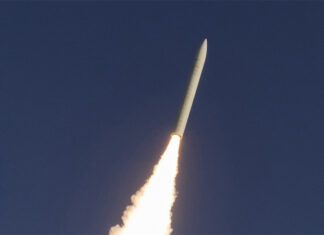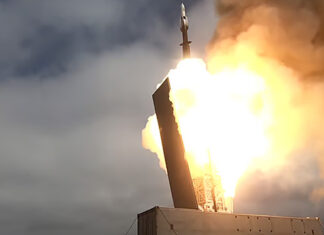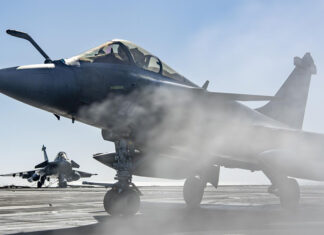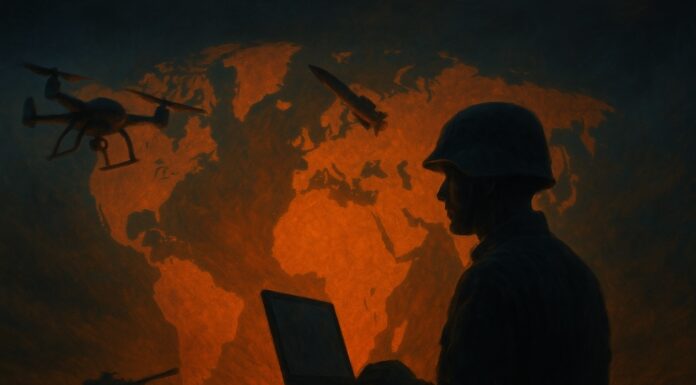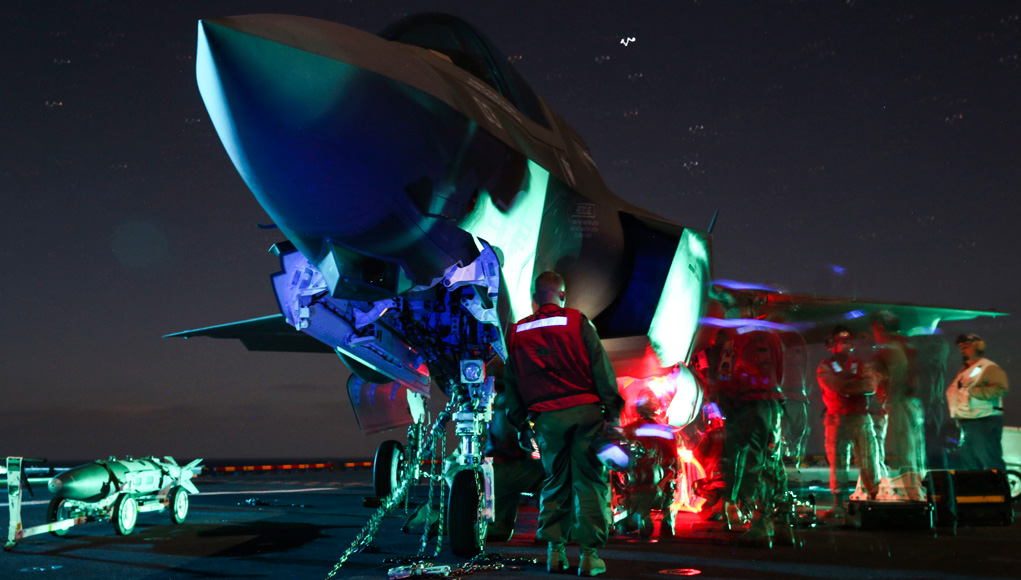
With the planned arrival of amphibious support ship USS Wasp (LHD-1) in the Pacific Ocean, the Wasp will replace USS Bonhomme Richard (LHD 6) as the forward-deployed flagship of the amphibious forces in the U.S. 7th Fleet area of operations. Wasp is leading the Up-Gunned Expeditionary Strike Group (ESG), a beefed-up naval force comprising three amphibious support ships, 2,200 personnel strong Marine Expeditionary Unit (MEU) and some Fifth Generation F-35B stealth fighters. This ESG enhances the U.S. rapid response capabilities and power projection in the volatile region of the Western Pacific.
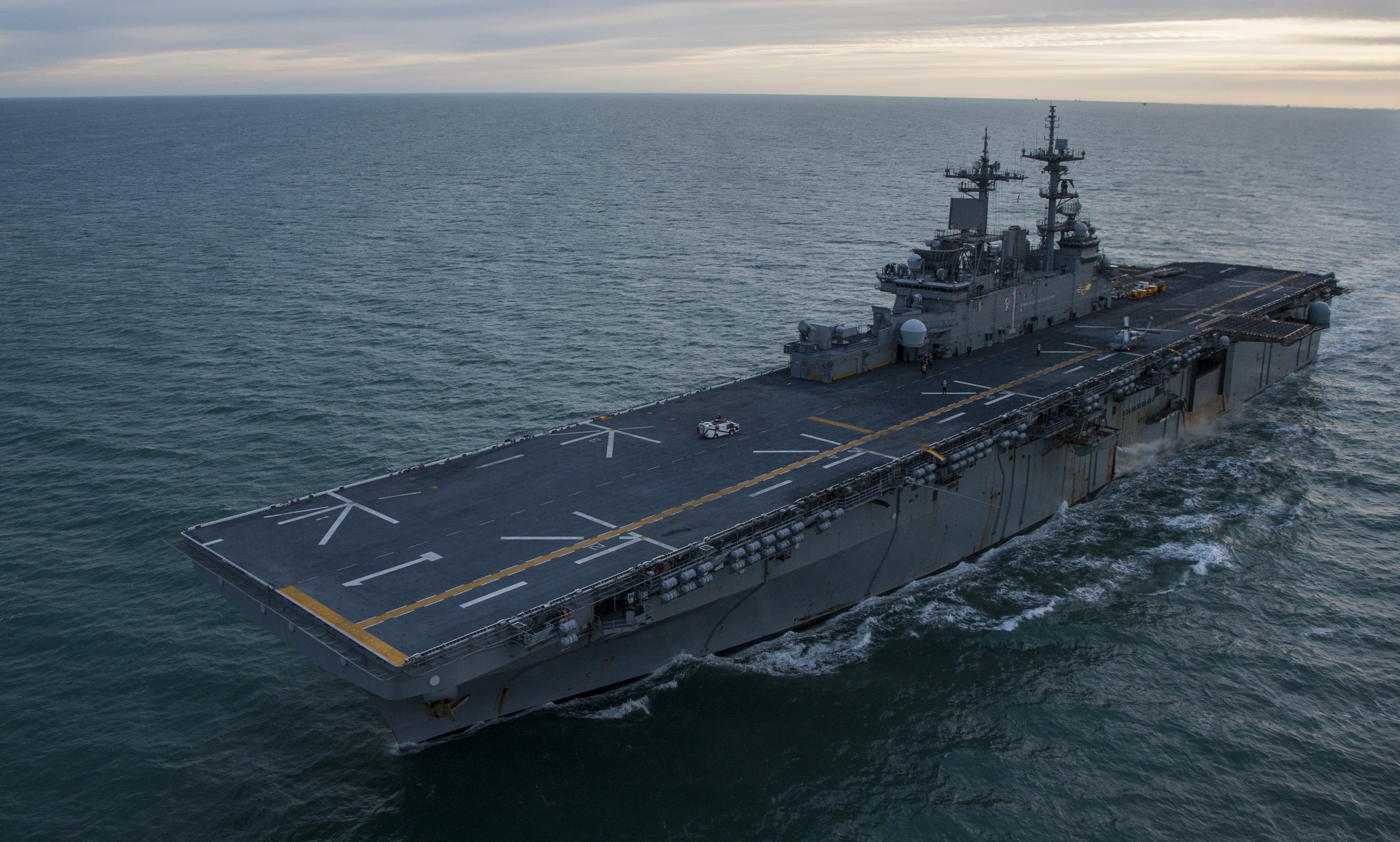
Apart from the American 40500 ton LHD that has already been modified to operate the F-35B, both Japan and South Korea are interested in the new potential mating STOVL fighters with flat-deck helicopter carriers. Both countries already acquired the conventional take-off variant (F-35A), and consider operating the Short Take-Off / Vertical Landing (STOVL) B version from ships.
On its current mission in the Pacific Ocean Wasp will perform its first operational mission with F-35B ship-based joint strike fighter capability. Wasp will operate in the Sea of Japan, in the region that includes North Korea and China. Wasp is transiting to Sasebo, Japan, to conduct a turnover with the USS Bonhomme Richard as the forward-deployed flagship of the amphibious forces in the Western Pacific.
The Marine Corps’ Marine Fighter Attack Squadron (VMFA 121) that operates F-35B from Marine Corps Air Station Iwakuni in Japan since January will provide the aircraft deployed on the Wasp as she arrives in Japan. Wasp is the centerpiece of the ESG, which also includes the amphibious transport dock ship USS Green Bay and one of two forward-deployed amphibious dock landing ships, the Navy said. The 31st Marine Expeditionary Unit (MEU) will also join the task group with more than 2,200 Marines aboard.
The ESG and MEU are the premier crisis response U.S. force in the western Pacific, able to respond at a moment’s notice to any contingency. “Our capabilities, paired with the F-35B Joint Strike Fighter, increases our Navy’s precision strike capabilities within the 7th Fleet region. Wasp commander Capt. Andrew Smith said.

Last week it was announced that South Korea considers buying additional 26 F-35s, in addition to the 40 they already ordered. Six of those 26 are likely to be F-35B STOVL variants, that will be able to operable from the Marado – the Korean Navy second Dokdo class assault ship currently under construction. This 14,000 ton vessel can be modified through the remaining construction phase, to operate F-35s as it is commissioned around 2020. Korea expects to begin deploying the first F-35As in 2018, and all 40 planes are slated for delivery by 2021 and open to receive the second batch of 20-26 starting in 2023.
Japan is also evaluating the possibility to deploy F-35B on naval vessels, specifically, the 20,000 ton Izumo Class helicopter carriers Izumo (JS183) and Kaga (JS184). The size of the Japanese ships is 30 ft (nine meters) shorter than the wasp (814 vs 844 ft – 257 vs 248 meters), This will practically transform Izumo into an aircraft carrier with limited offensive capability. This modification enables the Japanese naval forces to improve control of remote islands, employing the modified carrier as a ‘floating island’ refueling and rearming jet fighters operating far from shore. For its size, Izumo will be able to operate up to 10 aircraft on board. Japan also has two smaller helicopter carriers – JS Hyūga and Ise.
Japan does not necessarily have to buy the STOVL F-35B to benefit from such refit, as the modified carrier will be able to improve interoperability with the United States Navy and Marine Corps. Like the USS Wasp, the converted Izumo will be able to support F-35B on forward deployment or as a ‘floating refueling station ’The US Marine Corps is operating from bases in Okinawa.
While these developments are aimed to provide Tokyo with some deterrence against North Korea, it should also be a concern for China, as sources in Beijing immediately commented criticizing the Japanese move.
Following a defensive-oriented policy since the end of World War II, Japan does not pursue investments in strategic weapons such as long-range ballistic missiles, bombers, or aircraft carriers with attack capabilities. Following the North Korean aggression and proliferation of regional threats, Japan has bolstered its defense capabilities and is opening to expand military investments, and the Japanese government has already included funding for the introduction of long-range cruise missiles in its 2018 budget.
By possessing an aircraft carrier, even though not a large one, Japan could expand the flight range of fighter jets heading to attack North Korea’s territory, thus boosting the capability to strike an enemy base. Japan will review the National Defense Program Guidelines at the end of 2018, and whether to possess offensive capability will be a focal issue.





